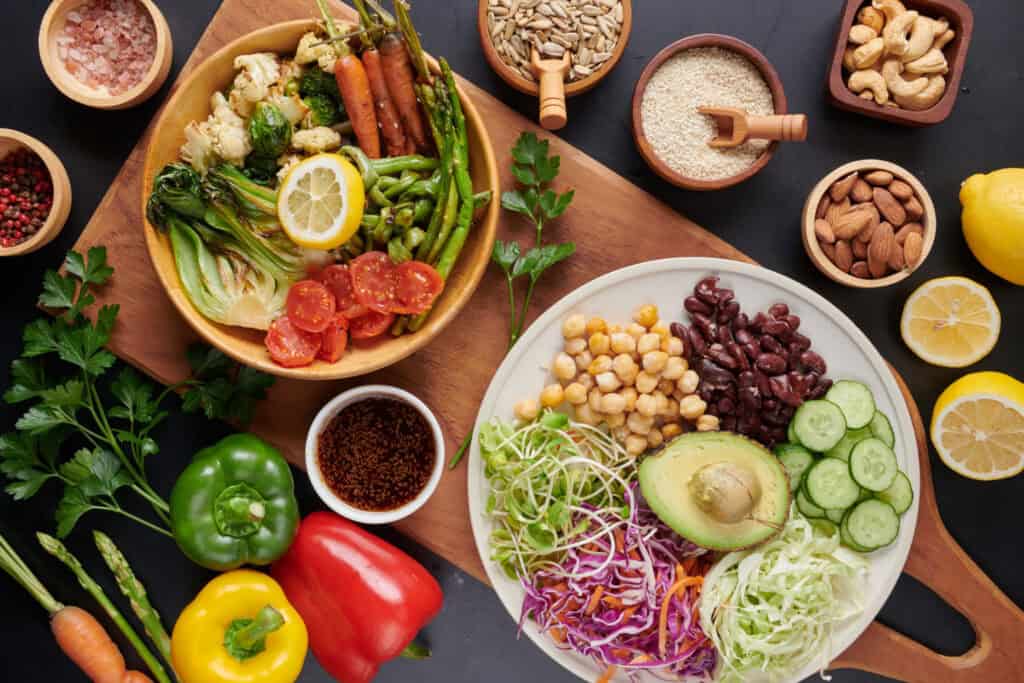
By Jermaine Thomas April 21, 2025
The focal point of any successful event is frequently the food. However, going to a catered event can cause anxiety for people with food allergies. The catering industry needs to change in the modern world, where awareness and inclusivity are crucial, to make sure that every visitor is seen, happy, and safe.
Understanding the Rise in Food Allergies
With food allergies on the rise globally, caterers must be more vigilant than ever. According to leading health organizations, millions of people suffer from some form of food allergy, and their reactions can range from mild discomfort to life-threatening anaphylaxis. It’s no longer just a nice gesture to cater to food allergies, it’s a necessity.
What Causes Food Allergies?
Food allergies are immune responses triggered by certain proteins found in specific foods. The body mistakenly identifies a harmless substance as a threat, releasing chemicals that cause allergic symptoms.
Common allergens include:
- Peanuts
- Tree nuts
- Dairy
- Eggs
- Shellfish
- Wheat
- Soy
While some people outgrow their allergies, others live with them for life. A single trace of an allergen can be enough to cause a reaction, making it crucial for catering teams to fully understand the seriousness of these conditions.
Why Catering Food Allergies Requires Special Attention
Caterers frequently prepare large quantities of food in advance, in contrast to restaurants that handle individual orders one at a time. The chance of cross-contamination may rise as a result. Multiple guests may be impacted by a single mistake because the food is prepared in large quantities and served to many at once. Because of this, managing food allergies in catering involves more than just understanding ingredients; it includes developing procedures that guarantee safety in the kitchen and during service.

Creating Allergen-Safe Menus Without Compromising Flavor
Designing a menu that’s both delicious and safe for allergy-sensitive guests is not only possible, it can become a selling point. With a little creativity and planning, caterers can offer allergen-safe menus that please all palates. Your menu should reflect not just dietary restrictions, but thoughtful inclusivity.
Step 1: Start with a Clear Allergen Policy
Every catering business should have a written allergen policy that all kitchen and serving staff follow. This includes procedures for ingredient sourcing, kitchen cleaning, food labeling, and emergency plans in case of an allergic reaction. Label all ingredients clearly, and separate allergen-free dishes during preparation and serving. Use color-coded utensils and pans when possible to reduce the risk of cross-contact.
Step 2: Offer Customizable Menu Options
Instead of a fixed meal for all guests, consider offering dishes that can be customized. For example:
- A pasta bar with gluten-free and dairy-free sauce options
- Salads with nuts served on the side
- Build-your-own tacos with allergen-free protein options
This gives guests the flexibility to make choices based on their allergies without drawing attention to their restrictions.
Step 3: Educate and Train Your Team
When it comes to food allergies, your team is your first line of defense. Make sure your employees are educated to identify common allergens, comprehend the dangers of cross-contamination, and interact with visitors in an effective manner. Waiters should be able to respond to simple inquiries about allergies and know when to call the chef or kitchen manager.
Step 4: Maintain Ingredient Transparency
Provide ingredient lists and allergen labels on buffets or menu cards. Transparency builds trust. Make it easy for guests to find out what’s in their food. This also prevents any accidental consumption of harmful ingredients. It’s essential that allergen-safe menus are not just technically safe but also clearly marked and easy to understand.
Maintaining Event Food Safety from Prep to Plate
Ensuring event food safety goes hand in hand with managing allergens. Food safety is the foundation on which all allergen protocols rest. It starts long before the food reaches the event and continues until the last plate is served. Maintaining clean environments, accurate labeling, and safe transport are vital elements.
Sanitation Protocols in the Kitchen
Clean, sanitize, and repeat. This mantra should guide every kitchen’s workflow, especially when allergen-free meals are part of the menu. Shared kitchen spaces must be cleaned thoroughly between preparing allergen-containing and allergen-free meals. Dedicate separate cooking surfaces, utensils, and even fryer oils if you frequently handle food for allergy-sensitive clients.
Safe Packaging and Transportation
To keep dishes separate and prevent cross-contamination during transit, use sealed, labeled containers when delivering food to off-site locations. Delivery vans should be hygienic and temperature-controlled, particularly for goods that need to be kept cold and don’t contain dairy or seafood. Food safety at events is supported by proper packaging, which guarantees that allergen-free meals arrive in the same secure state as when they were prepared.
On-Site Serving Precautions
Buffet-style setups can be high-risk zones for cross-contact. Use sneeze guards, serving utensils for each dish, and clear signage that separates allergen-safe items from others. For plated service, designate a special plating area for allergy-sensitive meals. Ensure servers know exactly which dish goes to which guest, reducing the risk of mix-ups.
Communication: The Key to Safe and Satisfying Experiences
Communication is perhaps the most underappreciated but most vital part of handling catering food allergies. A single assumption can lead to serious consequences. Open, clear communication with clients, vendors, and your own team helps everyone stay aligned. It’s not just about what you cook, it’s how you talk about it.
Have Allergy Conversations Early
Ask clients upfront if any guests have food allergies. Include allergy questions in RSVP forms or event planning discussions. The earlier you know, the better you can plan, shop, and prepare. This also gives clients peace of mind, knowing their concerns are taken seriously.
Label Everything Honestly
Avoid guessing. Do not mark a product as safe if you are unsure if it contains an allergen. Use trustworthy suppliers at all times, and look closely for any hidden allergens or cross-contamination warnings on packaging. Sincere labeling promotes allergen-free menus as well as general event food safety procedures.
Be Ready for Emergencies
Despite the best precautions, accidents can still happen. Have an emergency plan in place:
- Ensure someone on-site knows how to administer an EpiPen
- Keep a basic medical kit ready
- Know the location of the nearest hospital or urgent care
Train staff on how to act quickly if a guest shows signs of an allergic reaction, such as hives, swelling, difficulty breathing, or vomiting.
Client Education and Marketing for Allergy-Conscious Catering
Catering businesses that prioritize catering food allergies can turn it into a unique selling point. Today’s customers are more informed and health-conscious. They look for businesses that show responsibility, care, and inclusion in every plate they serve. Educating your clients can foster trust and set you apart in a crowded market.
Use Allergy-Safe Certifications to Build Trust
If your team has undergone food safety or allergen awareness training, make that known. Post certificates in your kitchen or share them on your website. It signals your commitment to event food safety and assures clients that you take health risks seriously.
Incorporate Allergy Education in Menus and Meetings
Explain to clients how you manage allergies during consultations. Describe your labeling systems, cross-contact management, and kitchen protocols. This not only gives them peace of mind, but it also informs them of the questions they should ask any vendor they choose to work with. Transparency creates enduring relationships with clients.
Showcase Your Allergen-Safe Menus in Marketing
Highlight successful allergy-safe menus you’ve executed in the past. Use testimonials from allergy-sensitive clients who enjoyed your food without fear. Add keywords like allergen-safe menus in your online content to attract search traffic from concerned event planners.

Trends Shaping the Future of Allergy-Conscious Catering
The demand for allergy-safe catering will only grow. As consumer awareness and food transparency increase, caterers who stay ahead of the curve will thrive. Here’s what’s shaping the future of catering food allergies:
Tech Integration for Safer Ordering
Mobile apps and catering platforms are now offering allergen filters and tracking systems. Digital menus can display allergens in real-time, helping guests make informed choices. Some tools even allow guests to pre-select meals based on their allergy profiles.
Ingredient Substitution Innovation
Plant-based proteins, dairy-free cheese, and alternative flours are more sophisticated and delectable than before. Caterers no longer have to compromise on flavor or texture when modifying recipes thanks to new developments in allergen-free ingredients. This implies that traditional menu items can be as rich and varied as allergen-safe menu items.
Stricter Regulatory Expectations
As more countries introduce mandatory allergen labeling laws for pre-packaged foods and restaurant meals, catering regulations may follow suit. Staying proactive and compliant not only avoids legal issues but positions your business as a leader in event food safety.
Conclusion
Managing dietary restrictions in catering is an opportunity as well as a challenge. Caterers can increase trust, improve experiences, and differentiate themselves in a crowded market by taking the time to learn about the needs of their guests, creating inclusive, allergy-safe menus, and adhering to strict event food safety regulations. Satisfaction and safety work together to create events that people will remember. Caterers can satisfy the needs of every guest at the table, ensuring that nobody goes home hungry or in at risk, with careful preparation, honest communication, and a little bit of imagination.